Investment Points
1) Bitcoin price fluctuations: Bitcoin prices fluctuate dramatically, such as the sharp rise and fall in 2017-2018 and 2021-2022, which leads to fluctuations in the value of listed companies' currency assets, affects financial statements and market value management, undermines investor confidence, and creates uncertainty in investment returns. 2) Regulatory policy risk: The global attitude towards cryptocurrency regulation varies and changes dynamically. For example, some states in the United States recognize it but federal agencies have strict supervision, China prohibits related businesses, and the European Union continues to improve its regulatory framework. Tighter regulation may lead to the impairment and sale of Bitcoin assets of listed companies, hinder business, and affect the normal operation and investment value of enterprises. 3) Market acceptance and application risks: Bitcoin as a means of payment has problems such as long transaction confirmation time and large price fluctuations, and cross-border transactions are subject to policy and regulatory restrictions. This limits the application and market penetration of Bitcoin in the business of listed companies, hinders the full realization of its market value, and may affect the development of the industry. |
Contents
1 Industry Overview
1.1 Review of Bitcoin Development
1.2 Background of listed companies’ involvement in Bitcoin
2 In-depth analysis of typical cases
2.1 MicroStrategy: Bitcoin Investment Pioneer
2.2 Tesla: A cross-border disruptor
2.3 Meitu: A representative of emerging forces
3 Investment Motivation Insights
3.1 Demand for asset diversification
3.2 Considerations for hedging inflation
3.3 Strategic layout intention
4 Outlook on the development trend of the coin-holding stock industry
4.1 Market size forecast
4.2 Evolution of the industry landscape
4.3 Prospects of integration with blockchain ecology
5. Development trend of the coin-holding stock industry
5.1 We answer two key questions about this round of currency stock industry revolution: pattern and space
5.1.1 Competition landscape of listed companies holding currency: the future will present a high fixed, low marginal cost structure leading to high concentration
5.1.2 Industry Space
5.2 Financial Performance of Listed Companies Holding Bitcoin
5.3 Valuation Model for Listed Companies Holding Currency
5.3.1 Market value premium rate
5.3.2 Net Asset Value (NAV) Premium Model
5.3.3 Bitcoin Price Sensitivity Model
6 Conclusions and Recommendations
6.1 Research Summary
6.2 Investment advice
6.3 Identification of risk factors
6.4 Industry Outlook
Table of contents
Figure 1 Overview of Trump’s Bitcoin Conference promises and fulfillment
Figure 2 Trend chart
Figure 3 Asset Allocation
Figure 4 Crypto-stock company listing forecast
Figure 5 Asset Allocation Chart
Figure 6 Asset Allocation Chart
Figure 7 Market premium rates of MSTR, NANO, MARA and Boyaa Interactive
Figure 8 Company Value of MSTR, NANO, MARA and Boyaa Interactive
Table 1 Trump Bitcoin Conference Promises and Fulfillment
Table 2 Main categories of listed companies holding Bitcoin
Table 3 Competition landscape of listed companies in the coin holding industry (list of coin holding companies)
Table 4 NB Coin-Stock ETF Index
Table 5 Market premium rate
Table 6 Median of industry market value premium rate
Table 7 Company Value
Table 8 Company Value
Table 9 Market value increase
Table 10 Market value increase
1 Industry Overview
1.1 Review of Bitcoin Development
Bitcoin was born in the context of the global financial crisis in 2008. It was conceived by Satoshi Nakamoto and the Genesis Block was mined on January 3, 2009, marking its official launch. At first, Bitcoin circulated only in a small circle of cryptography geeks and technology enthusiasts, and its value was almost zero. In May 2010, American programmer Laszlo Hanyecz used 10,000 Bitcoins to buy two pizzas. This was the first commercial transaction of Bitcoin. At that time, the price of Bitcoin was about $0.003. Since then, with the rise of Bitcoin trading platforms, such as the establishment of Mt. Gox, its price has gradually been determined by the market. In 2013, the price of Bitcoin once exceeded $1,000, attracting global attention; in December 2017, it soared to a historical high of nearly $20,000, attracting the attention of a large number of investors and media. Although it has experienced a sharp correction and volatility since then, the market value and influence of Bitcoin have continued to rise, gradually integrating into the mainstream investment vision, becoming an indispensable force in the financial field, and also prompting more listed companies to think about its strategic significance and potential value.
The development of Bitcoin is accompanied by many key nodes and important events, which have a profound impact on its price trend and market perception. 2009-2010 was the embryonic stage of Bitcoin. The birth of the Genesis Block opened a new era of decentralized cryptocurrency. At this time, transactions were extremely niche, there was no clear market price, and only a small amount of circulation among technology geeks for testing and trial, more for concept verification. 2011-2013 ushered in the early growth and fluctuation period. The price of Bitcoin broke through the key psychological price of US$1, US$10, and US$100 for the first time, attracting technology innovators and early investors to enter the market. At the same time, trading platforms such as Mt. Gox emerged, providing a place for price discovery and market transactions. In 2013, the Cyprus debt crisis broke out, causing Europeans to seek Bitcoin for risk aversion, pushing the price of the currency above US$1,000, and mainstream media began to pay attention to the report.
From 2014 to 2016, the market fell into a bear market adjustment. The theft of 850,000 bitcoins from Mt. Gox severely damaged market confidence. The price of bitcoin retreated sharply from its highs. Regulatory uncertainty increased. Many countries expressed their intention to strengthen regulation or even ban bitcoin trading. The market trading activity dropped sharply. Investors were in a wait-and-see mood. The mining industry also faced a reshuffle due to low prices and increased difficulty, and the computing power pattern was reshaped. From 2017 to 2018, there was another crazy bull market and deep correction. The ICO (Initial Coin Offering) boom emerged, and a large amount of funds poured into the crypto market. As the benchmark of "digital gold", the price of Bitcoin soared from about US$1,000 at the beginning of the year to nearly US$20,000. At the end of the year, with the bursting of the ICO bubble and the strong suppression of various countries, the price of the currency collapsed and fell back to the US$3,000-4,000 range within a few months. Many investors lost all their money and market panic spread.
From 2019 to 2021, the market entered a stage of repair, recovery and new prosperity. After fluctuating in the range of US$3,000 to US$10,000 and bottoming out, Bitcoin started a new round of rise. Institutional investors rushed into the market, Grayscale Bitcoin Trust continued to increase its holdings, and listed companies such as MicroStrategy made large allocations. Bitcoin's status as an emerging alternative asset gradually stabilized. In April 2021, the price of Bitcoin exceeded US$60,000. The market was hot, and ecological applications such as payment, lending, and derivatives were accelerated. From 2022 to 2024, the price of Bitcoin has been fluctuating and consolidating. The bubble accumulated in the previous bull market burst, and the price of Bitcoin fell sharply due to the Fed's interest rate hike and concerns about the global macroeconomic recession. It once fell below $16,000. Later, with the shift of macroeconomic policies, clear industry supervision, and technological innovation, such as the expected approval of Bitcoin spot ETFs and the optimization of expansion plans such as the Lightning Network, the price of Bitcoin gradually stabilized and rebounded. In 2024, it fluctuated in the range of $30,000 to $70,000 and broke through $100,000 in one fell swoop. In 2024, the price of Bitcoin rose by 120.88% throughout the year. Within a month after Trump's victory, it broke through the $80,000, $90,000 and $100,000 mark, and then gradually fell after reaching a peak of $109,000. It is now hovering around $105,000. Market participants are becoming more rational, and the industry is moving towards compliance and diversification.
| Figure 1 Overview of Trump’s Bitcoin Conference promises and fulfillment |
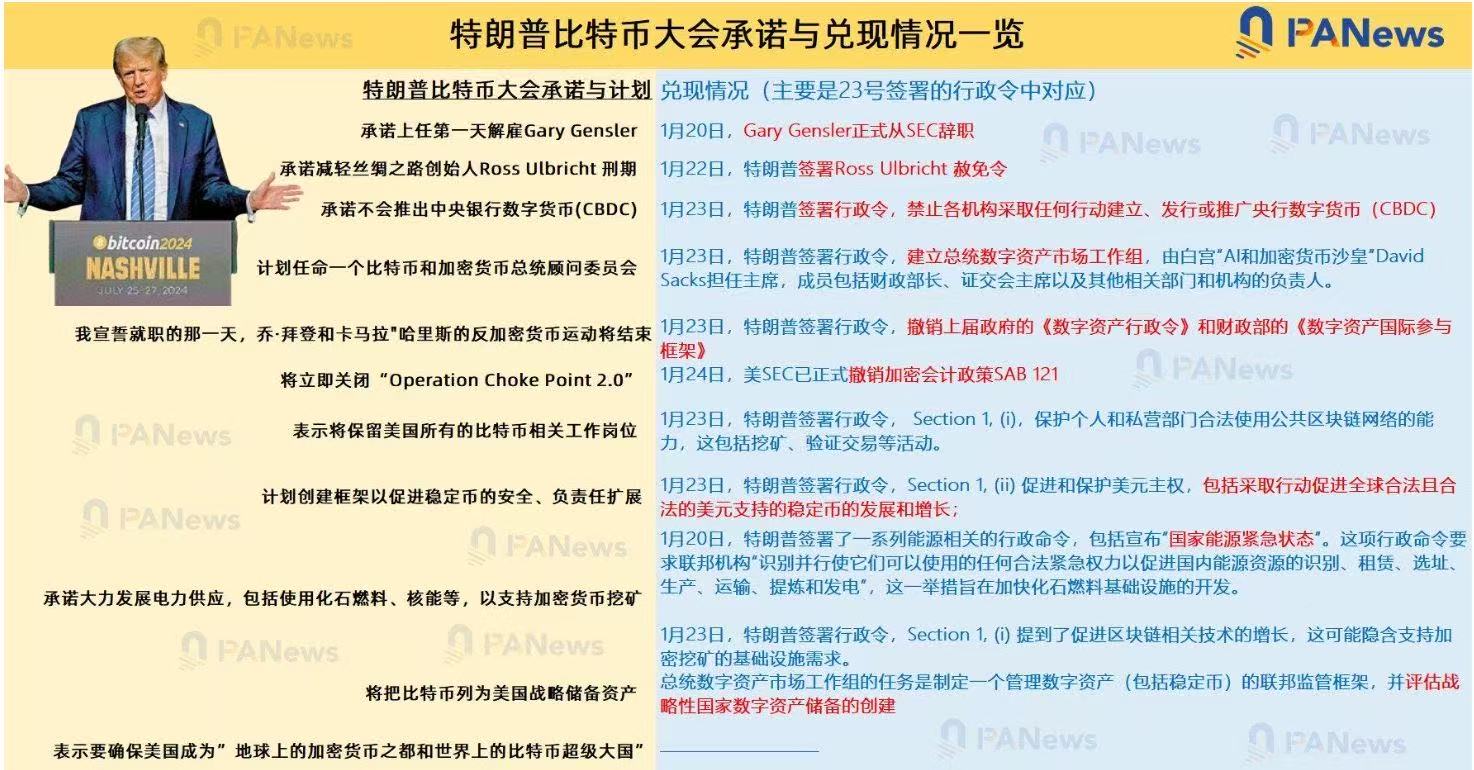 |
| Source: PA News |
As shown in Table 1, it will reach $93,500 on January 1, 2025, which is about 297 times the level on January 1, 2015.
| Figure 2 Trend chart |
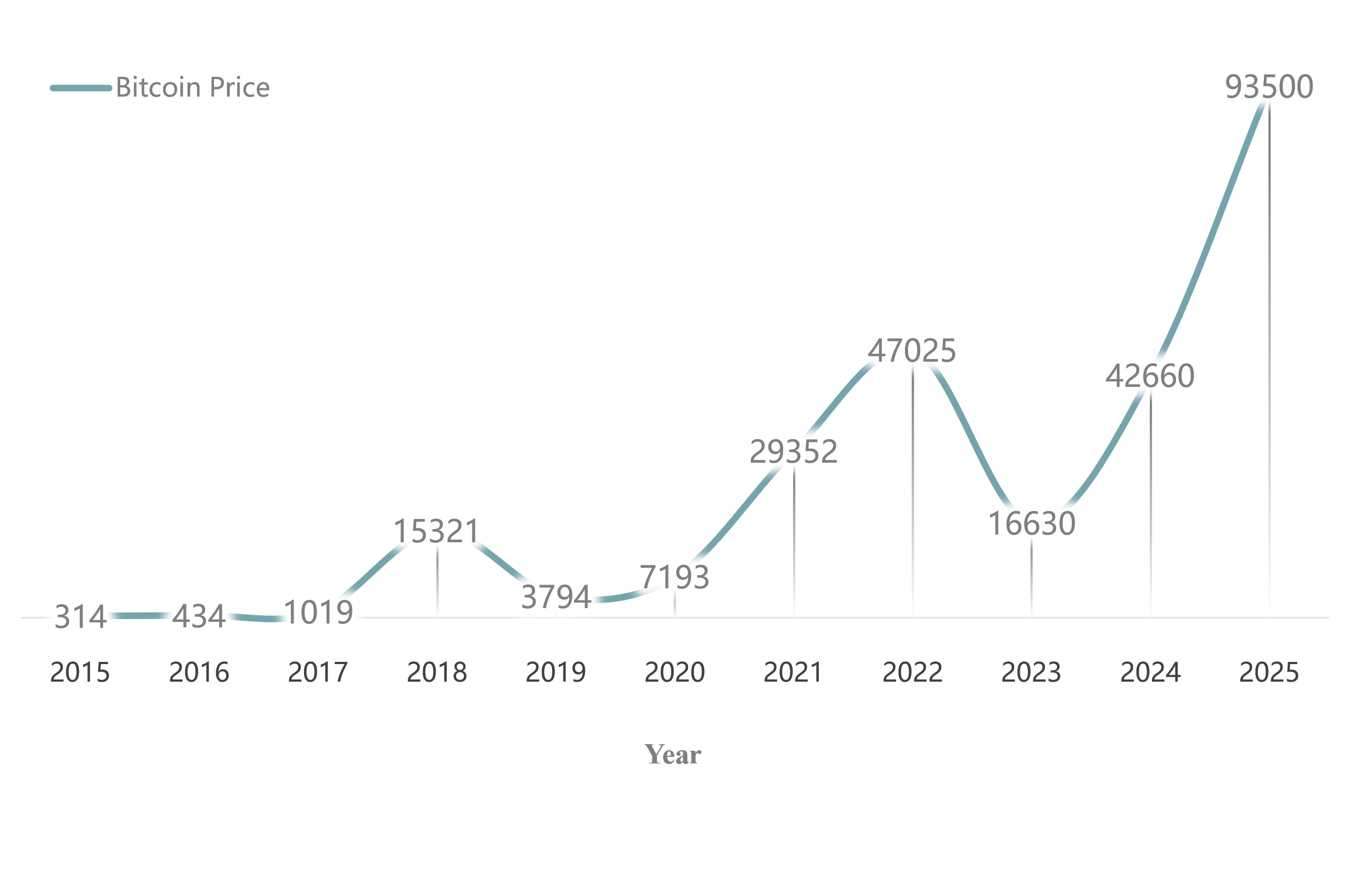 |
| Source: BB Research |
From the perspective of price characteristics, in the early days of Bitcoin, due to the small number of participants and shallow market depth, the price was easily affected by small changes in supply and demand and the dynamics of the technology community, and fluctuated violently and irregularly; in the growth stage, it was driven by multiple factors such as macroeconomic events, regulatory policies, and technological innovation iterations, showing cyclical and large fluctuations, with rapid and astonishing increases in bull markets and rapid pullbacks in bear markets; in recent years, with the maturity of the market and the participation of institutions, although there are still fluctuations, the price trend is gradually dominated by long-term factors such as macroeconomic fundamentals, monetary policy, and industry supply and demand, and the linkage with traditional financial markets is strengthened. However, the unique halving mechanism still brings special variables to its price cycle. The halving every four years reduces the supply of new Bitcoin coins, providing momentum for the rise in currency prices from the underlying logic of supply and demand, stimulating market expectations and cyclical surges in investment enthusiasm.
Recently, several key figures in the US political and business circles have expressed their respective positions on Bitcoin, affecting market trends and investor sentiment. After Trump was re-elected as US President in November 2024, he promised to make the United States the "global cryptocurrency capital" and consider including Bitcoin in the national reserve. He was sworn in on January 21, 2025, and Bitcoin broke through $1.09 billion to set a record high. The market value of "Trump meme coin" exceeded $20 billion in one day. Musk has always been an active supporter of cryptocurrency and supports Trump's cryptocurrency-friendly policies, believing that it will promote technological innovation and economic growth. Federal Reserve Chairman Powell recently made it clear at a press conference that the Fed has no intention of holding Bitcoin, and emphasized that the Fed is prohibited from holding such assets under the Federal Reserve Act. He also pointed out that the Fed will not seek to change this law. Powell's position on monetary policy is believed to have an indirect impact on the Bitcoin market.
Gold is a mature reserve asset with a long history and stable price, but it has physical limitations. Bitcoin is an emerging reserve value tool with scarcity, convenience and technological potential, but high volatility and uncertainty. In the future, Bitcoin and gold may coexist: gold continues to be a traditional reserve asset, while Bitcoin occupies a place in the digital economy and among young investors. The specific choice depends on the balance between investors' demand for stability and growth potential. If more central banks and institutions around the world begin to adopt Bitcoin, its reserve asset status may increase significantly in the next decade.
1.2 Background of listed companies’ involvement in Bitcoin
From a macroeconomic perspective, the main reasons are unstable global economic growth, fluctuations in traditional monetary policies, and concerns about inflation. For example, after the 2008 financial crisis, Europe and the United States implemented long-term quantitative easing and over-issuance of currency, which led to market doubts about the value storage function of legal currency. Bitcoin is considered by some listed companies as a new option for hedging inflation and preserving assets due to its fixed total of 21 million coins and decentralized features. MicroStrategy, for example, has publicly stated that it has purchased Bitcoin to counter the risk of dollar depreciation.
At the financial market level, on the one hand, the returns of traditional investment areas such as the stock market and bond market have fluctuated greatly in recent years. In a low-interest environment, bond returns are meager, and the stock market has frequently fluctuated sharply due to trade frictions, geopolitics and other shocks; on the other hand, there is an urgent need to diversify investment portfolios. Bitcoin has a low correlation with traditional assets and can effectively diversify risks. According to statistics, the average correlation between Bitcoin and asset returns such as stocks and bonds from 2015 to 2020 was only 0.11. In order to pursue stable returns and optimize asset allocation structure, listed companies have begun to explore new opportunities in the Bitcoin field.
2 In-depth analysis of typical cases
2.1 MicroStrategy: Bitcoin investment pioneer
MicroStrategy, one of the listed companies with the most Bitcoin in the world, started its Bitcoin investment journey in August 2020. At that time, the global economy was hit by the epidemic, the traditional financial market was turbulent, and the expectation of US dollar depreciation was rising. The company purchased Bitcoin as inventory assets for US$250 million, and the timing of entry accurately captured the nodes of macroeconomic changes. Since then, its currency holding strategy has continued to be aggressive, such as multiple large-scale increases in holdings in September 2020 and the first quarter of 2021. During this process, the company's stock price and Bitcoin price were significantly linked. During the Bitcoin bull market, it attracted a large number of investors with huge floating profit expectations, and the stock price soared, with an increase of more than 500% in 2024; and during the period of deep adjustment of Bitcoin prices, the stock price also fluctuated greatly. For example, the price of the currency retreated in 2022, and the company's market value evaporated by billions, showing the characteristics of high risk and high return, which profoundly affected the investor sentiment and capital flow in the encryption and traditional financial markets.
2.2 Tesla: A cross-border disruptor
At the beginning of 2021, Tesla invested $1.5 billion in Bitcoin, instantly igniting market enthusiasm. The price of Bitcoin was hit by this huge amount of capital injection and rose sharply in the short term. Musk's tweets became a "catalyst" for currency price fluctuations. On the one hand, investing in Bitcoin is a way for the company to find a value-added outlet for idle funds and alleviate the difficulties of capital returns in a low-interest environment; on the other hand, in March of the same year, it announced that it would accept Bitcoin for car purchases, trying to open up a closed loop between encrypted payments and car sales. Although it was cancelled due to controversy over Bitcoin's energy consumption and price fluctuations, it successfully shaped Tesla's brand image as a pioneer in technology and daring to innovate. The heat in the encryption field spilled over to the automotive business, attracting the attention of young people and technology enthusiasts, stimulating the growth of vehicle orders, and the peak period of Bitcoin business added bright profits to the financial report. Although the strategy turned to caution in the future, it still maintained its voice in the encryption field with its remaining positions.
2.3 Meitu: A representative of emerging forces
From March to April 2021, Meitu spent $100 million in three installments to purchase more than 940 bitcoins and 31,000 ethers, making a strong entry into the crypto track. From a business perspective, as an imaging technology company, Meitu's traditional business faces a competitive sea. It attempts to embrace new technology trends through crypto investment and explore the intersection of digital content and blockchain, such as launching a copyright protection application for creative works based on blockchain; from a financial perspective, the initial appreciation of crypto assets helps optimize the balance sheet, with considerable floating profits and a short-term rise in stock prices. However, the bear market hit in 2022, and asset impairment put pressure on performance and net losses soared. After surviving the cold winter, the market rebounded in 2023-2024 and seized the opportunity to sell, making a profit of approximately US$79.63 million, successfully recovering funds to return to the core imaging business, using crypto investment as a "springboard" for transformation, accumulating experience in emerging fields, and exploring new paths for business diversification and financial stability.
3 Investment Motivation Insights
3.1 Demand for asset diversification
In the framework of traditional portfolio theory, asset diversification is the key to reducing non-systematic risks. The asset allocation of listed companies is mostly concentrated in stocks, bonds, cash and other fields. For example, during the 2008 financial crisis, the stock market plummeted, the bond market fluctuated, and a large number of corporate assets shrank. Bitcoin has become a "new favorite" for risk diversification due to its unique properties. According to Bloomberg data, the average correlation between Bitcoin and the S&P 500 index from 2010 to 2020 was only 0.08, and the correlation with bonds was almost zero. Before MicroStrategy entered the market, asset allocation relied on assets related to the commercial software business, facing industry cyclicality and market competition concentration risks; after the introduction of Bitcoin, the asset portfolio was diversified and the income stream was diversified. For example, in the 2021 crypto bull market, Bitcoin investment income exceeded the main business software, smoothing the fluctuations of a single business, reducing overall risk exposure without sacrificing too much expected income, and laying a solid foundation for the financial stability of the company.
| Figure 3 Asset Allocation |
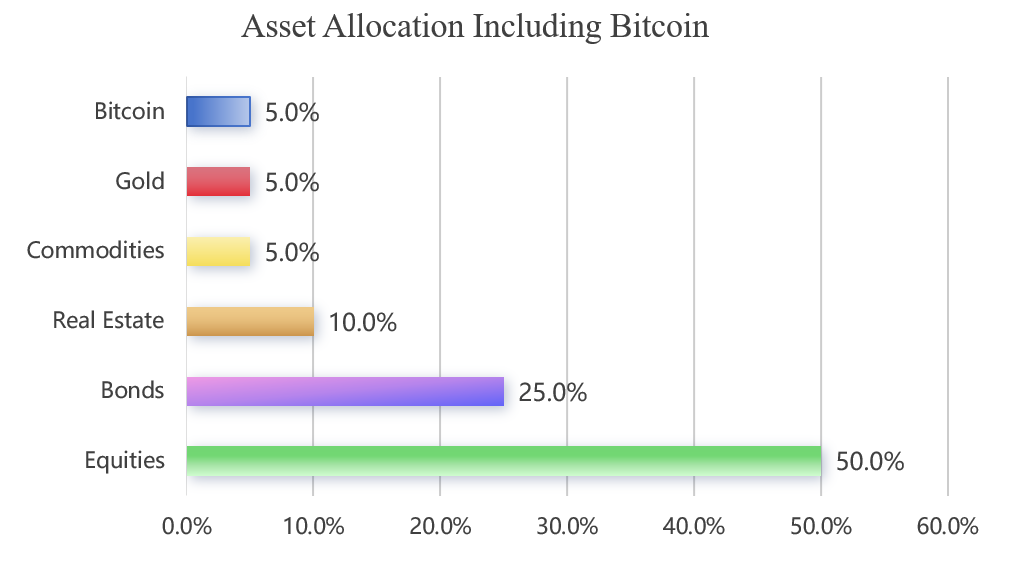 |
| Source: OPEN AI official website, BB Research |
3.2 Considerations for hedging inflation
In the fluctuation of global economic cycles, inflation is the "Sword of Damocles". Especially after 2020, under the epidemic situation, countries have implemented quantitative easing, over-issued money, and high inflation. The US CPI in 2022 once exceeded 9%. Traditional anti-inflation assets such as gold and real estate are limited. Gold is affected by geopolitics and central bank dumping, and real estate faces regulation and liquidity bottlenecks. Bitcoin has strong anti-inflation in theory due to its constant total amount of 21 million and decentralization. From the data, from 2009 to 2023, compared with the US inflation data, the increase in Bitcoin prices far exceeds the inflation rate. In some periods such as 2013 to 2017, when inflation rose moderately, the annualized increase in Bitcoin exceeded 200%. Enterprises can purchase Bitcoin at the balance sheet level to hedge against the erosion of rising prices to a certain extent, maintain purchasing power, and protect shareholders' rights. Many resource-based and consumer-based enterprises are greatly affected by inflation driven by upstream costs. Trying Bitcoin hedging is to explore new ways for cost control and profit stability.
3.3 Strategic layout intention
Under the wave of emerging technologies, blockchain and crypto economy are regarded as the forefront of future changes. Some listed companies have proactively deployed Bitcoin to seize the opportunity. Technology company Reddit purchased Bitcoin to strengthen the community's crypto ecological identity, explore new models, use "community points + Bitcoin" to attract user participation, and inject vitality into the development of the platform; financial institution Grayscale entered the market in compliance with Bitcoin Trust, absorbed funds, accumulated experience, and shaped standards to achieve the transformation from traditional asset management to digital asset management; traditional enterprise Tesla invested in Bitcoin, associated with encrypted payments, integrated into the multi-field collaborative ecology, expanded business boundaries, and used hot marketing to attract customers and enhance brand image. Pioneers in various industries use Bitcoin to "test the waters" for related strategies and open up new "colonies."
4 Outlook on the development trend of the coin-holding stock industry
4.1 Market size forecast
Based on the rapid growth of listed companies holding Bitcoin in recent years, the future scale expansion momentum is strong. From the perspective of the market value of holdings, although only a few companies currently hold large positions, with the upward movement of the Bitcoin price center and the entry of more companies, it is expected to rise exponentially. According to OKG Research estimates, if about $2.28 trillion of funds flow into the Bitcoin market in the next year, pushing the price of the currency to $200,000, the market value of the currency held by listed companies will surge simultaneously, and the asset size of leading companies such as MicroStrategy may exceed $100 billion. In terms of the number of companies holding coins, the penetration of emerging markets and traditional industries has accelerated, with a growth rate of about 15% in the past five years, and it is expected to increase at a rate of 20% in the next five years. In particular, new start-ups in the financial and technology fields are attracted by the encryption culture and investment returns, and will rush into the market, from the current 80 to 200, completely rewriting the industry map, and Bitcoin has moved from "niche embellishment" to "mainstream weight" in corporate balance sheets.
| Figure 4 Crypto-stock company listing forecast |
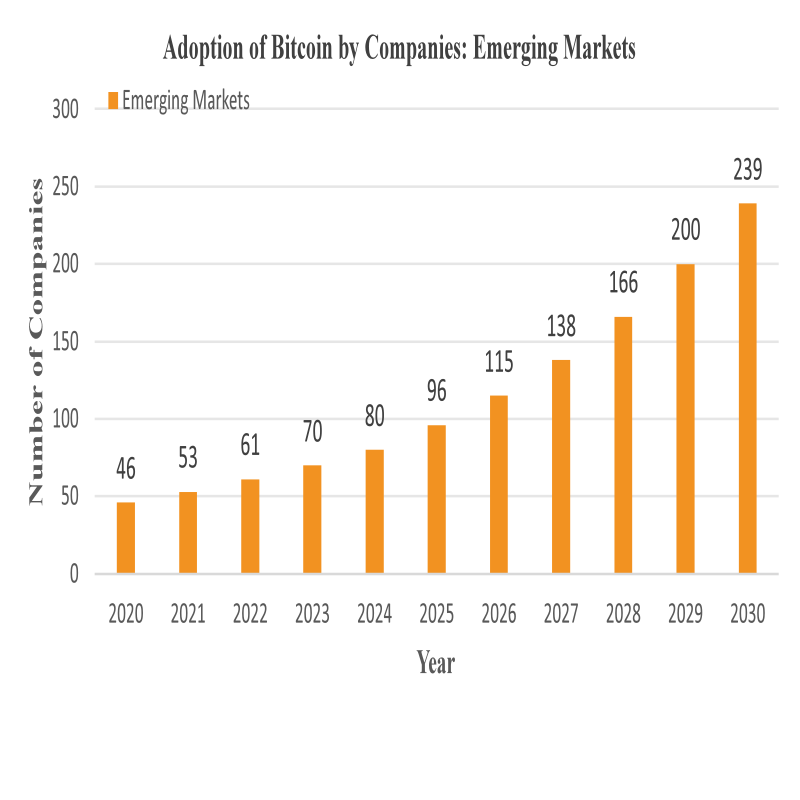 |
| Source: OPEN AI official website, BB Research |
4.2 Evolution of the industry landscape
Competition between new and old players will be fierce. Old giants such as MicroStrategy and Tesla continue to consolidate their positions with their first-mover, capital, and brand advantages. MicroStrategy may rely on its professional crypto investment team to expand Bitcoin-related financial services and build a "Bitcoin asset management empire"; Tesla will increase its holdings by leveraging the cash flow of its main automotive business and strengthen the crypto-automotive ecosystem linkage. Emerging forces should not be underestimated. Fintech startups are competing for market share with innovative products and flexible strategies, such as launching Bitcoin income optimization financial management to attract retail investors to enter indirectly; traditional industry giants are crossing over to disrupt the market, and energy and retail companies are entering the market to use upstream and downstream resources of the industry to explore Bitcoin payments and supply chain financial innovations. The industry concentration will be diluted by new players in the short term, but in the long run, comprehensive players with resources, technology, and brands will stand out, reshape the industry's top echelon, and form a new multi-polar competition pattern.
4.3 Prospects of integration with blockchain ecology
It is a general trend for listed companies to deeply participate in the construction of blockchain infrastructure. Technology companies invest in research and development to optimize the performance of blockchains with Bitcoin as the core, reduce transaction costs and shorten confirmation time, such as exploring the commercial application of lightning networks, making small-amount high-frequency payments a norm, and expanding Bitcoin's daily consumption scenarios; financial institutions build compliant Bitcoin custody and clearing platforms based on blockchain to "clear obstacles and set up platforms" for institutional entry, and promote the transformation of Bitcoin from "wild" to "domesticated". At the application development level, companies explore the value of Bitcoin beyond "currency", such as traceability and copyright fields, combine NFT, use Bitcoin as a value anchor, empower digital asset rights confirmation and circulation, and realize the two-way progress of virtual economy entity and real economy virtualization. With the help of blockchain, Bitcoin jumps out of the category of pure investment products and integrates into the core area of the global commercial value creation network, enabling the digitalization of thousands of industries.
5. Development trend of the coin-holding stock industry
5.1 We answer two key questions about this round of currency stock industry revolution : pattern and space
5.1.1 Competition landscape of listed companies holding currency: the future will present a high fixed, low marginal cost structure leading to high concentration
Public companies holding Bitcoin refer to companies that have included Bitcoin in their balance sheets and are publicly traded in the capital market. They may view Bitcoin as a reserve asset, part of an investment portfolio, or a strategic technology asset. The cryptocurrency industry revolution brought about by the predictable policies of the United States, such as the Bitcoin U.S. National Reserve Strategy Act series, is becoming the de facto starting point for the next technological revolution, changing the financial landscape and breaking through the arms race.
The asset management industry for listed companies holding cash has high fixed cost investment requirements, but the marginal usage cost is relatively low and shows a rapid downward trend, which means a high level of industry concentration, which will gradually develop into a head-to-head competition pattern in the future.
We believe that the global competition landscape will tend to be a competition where a hundred flowers bloom. On the one hand, the market concentration is high due to Bitcoin transactions, and there are certain industry barriers. On the other hand, the basic means of Bitcoin asset management tend to be homogenized in the early stage, but there are certain differences in the industry experience accumulated in the past. Bitcoin asset management capabilities will become the core competitiveness of enterprises, and the leading players who master Bitcoin's profit enhancement strategy will gain this advantage.
(1) Competitive factors for listed companies holding coins: The value of holding coins is homogenized, and the number of bitcoins held has become the core competitiveness of the company.
We divide the competition among listed companies holding Bitcoin into three dimensions: quantity, scenarios, and functions. We can see that for giants, scenarios and functions are highly homogeneous, and only the quantity dimension has significantly differentiated competition. We believe that in the ultimate competition, quantity will be king, and further, first-mover advantage and unique scenarios will be king.
| Figure 5 Asset Allocation Chart |
 |
| Source: OPEN AI official website, BB Research |
(2) Homogeneous competition in currency storage value
a. Scenario level: The core reason is that the Bitcoin blockchain cannot support the deployment of new financial applications like Ethereum, making it difficult to become an ideal financial infrastructure.
b. Functional level: Early Bitcoin investors tended to be risk-averse in their investment philosophy and lacked proven complex structures and risk hedging strategies, making it difficult to meet investors’ demands for diversified returns and risks.
(3) Competition in quantity: first-mover advantage and scenario advantage
Quantity is significantly differentiated and will become the core competitive factor that determines the winner among the crowd. We believe that the essence of quantity competition lies in the competition of speed and scenarios. First, whether it is possible to quickly hold a large number of Bitcoins and enjoy the model optimization brought by the quantity flywheel; second, whether there are suitable scenarios to support the accumulation of a sufficient number of Bitcoin strategies to enhance the application of strategies.
a. The flywheel effect of the number of coins held: the positive cycle of the number of Bitcoins and the asset management model
The more coins held, the more interactive feedback there is between investors and the asset management model, and the better the model can be optimized. In theory, 1) the larger the data volume, the richer and more comprehensive the investment levels and dimensions, and the more timely the updates, the better the investment model will perform; 2) for the large model of Bitcoin's enhanced investment strategy route (reinforcement learning with market feedback) is the core link of model tuning. It can be considered that the number of coins held affects the actual use scenarios of the asset management model, and the scale of coins held is crucial to promoting the optimization of the asset management model.
b. The uniqueness of data and scenarios creates opportunities for differentiation
Application scenarios of Bitcoin enhanced strategies: 1) Optimize the adaptive capabilities of models through AI to improve the robustness of strategies under extreme market conditions; 2) Design innovative enhanced strategies using tools provided by decentralized finance (DeFi) platforms (such as AMM, decentralized lending); 3) Large-scale development of security usage scenarios and new sources of ecological benefits. For a long time, Bitcoin applications and benefits have been scarce, resulting in leading listed companies only being able to use Bitcoin as a value storage tool.
(4) Number of companies held and their geographical distribution
According to data from Coingecko, OKG Research and other institutions, as of 2024, there are about 80 listed companies in the world holding Bitcoin. North America is dominant, with more than 60% of related companies, and the United States leads with more than 50 companies, including well-known companies in the industry such as MicroStrategy and Tesla. Europe follows closely, accounting for about 20%, and companies in countries such as the United Kingdom and Germany participate due to the relaxed financial regulatory environment. Asia accounts for about 15%, represented by Japan and South Korea. Driven by the legalization of cryptocurrency transactions, about 10 companies in Japan have invested in Bitcoin, while South Korean companies have purchased Bitcoin to expand payment and asset appreciation channels due to the developed Internet and gaming industries. Listed companies in other continents have a lower level of participation, mainly due to financial infrastructure and regulatory uncertainty.
| Figure 6 Asset Allocation Chart |
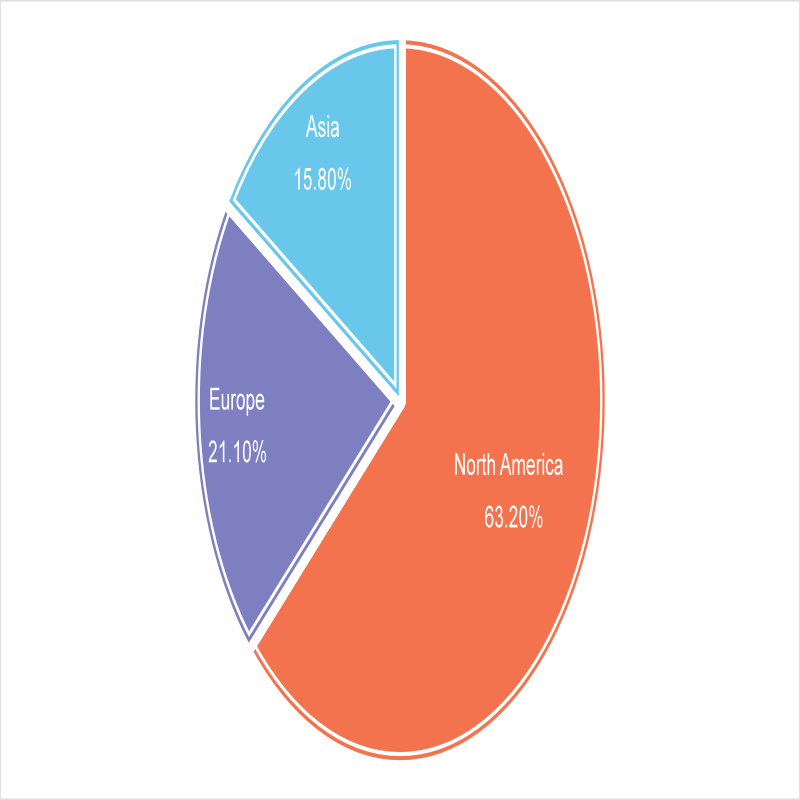 |
| Source: OPEN AI official website, BB Research |
(5) Differences in industry categories
Many listed companies have invested in Bitcoin, with technology companies leading the way, accounting for more than 40%. Software giant MicroStrategy has optimized its asset structure through Bitcoin, and has continued to purchase Bitcoin since 2020, holding more than 400,000 coins by 2024, viewing Bitcoin as a tool to fight inflation and store digital wealth. Payment companies such as Square and PayPal are exploring new settlement methods through Bitcoin payment ecosystem construction. Internet and e-commerce companies such as Rakuten and Meitu are seeking new business opportunities and traffic monetization by purchasing cryptocurrencies.
The financial industry accounts for 30%. Asset management institutions hold Bitcoin on a large scale through the GBTC Trust. Crypto hedge funds and quantitative investment companies use algorithms to arbitrage price fluctuations. Some banks study digital currency-related businesses and explore compliance participation in the Bitcoin financial ecosystem.
Mining companies account for 20%. For example, Marathon and Riot Platforms take advantage of their computing power to reserve large amounts of Bitcoin in addition to operations and debt repayment. Their strategies are influenced by a variety of factors, which together with mining machine manufacturers and mining pools affect the supply of Bitcoin.
Traditional industries such as manufacturing and consumer industries account for a relatively small proportion, less than 10%. For example, although Tesla is mainly engaged in automobile manufacturing, Musk's forward-looking vision has led him to invest $1.5 billion in Bitcoin, aiming at asset diversification and brand marketing. Although the strategy has been adjusted, he still holds more than 10,000 Bitcoins, providing an example for new manufacturing companies to integrate into the crypto economy. Investing in Bitcoin in various industries reflects different views on industry changes, asset appreciation and user needs.
(6) Coin holdings and asset allocation ratio
The scale of bitcoin holdings by listed companies varies greatly. MicroStrategy holds 446,400 bitcoins, with a market value of over $50 billion, far exceeding other companies; Tesla, Galaxy Digital, Hut 8 and others hold thousands to tens of thousands of bitcoins, with a market value of hundreds of millions to billions; more than half of the companies hold less than a thousand bitcoins.
In terms of asset allocation, MicroStrategy has over 70% of its assets in Bitcoin, with a strategic focus on the crypto ecosystem; medium-sized companies such as Meitu have about 10% to 20% of their assets in Bitcoin, as a supplement to emerging investments; small or cautious companies have less than 5% of their Bitcoin allocation, just for testing the waters. The scale of holdings and asset allocation show the different attitudes of companies towards crypto assets, and also indicate the diversity of Bitcoin's role in the future of enterprises.
5.1.2 Industry Space
(1) Bitcoin ETFs and Bitcoin active management covering staking, CeDeFi rate arbitrage and DeFi may be replaced by other recommendations to maximize the release of Bitcoin's intrinsic value. Here, we include all entries based on Bitcoin passive ETFs and active asset management into the definition, including Coinbase (ETF), MARA (mining companies), and MSTR (listed companies hoarding coins), which may be replaced by multiple competitive entrants in the industry;
(2) Some established Bitcoin investors are generally conservative in their investment philosophy and have a high degree of risk aversion;
(3) Although Bitcoin is a powerful means of storing value, it is difficult to meet investors' diversified demands for returns and risks at the financial management level.

5.2 Financial Performance of Listed Companies Holding Bitcoin
5.2.1 Balance sheet impact: Bitcoin is usually included in financial statements as an "intangible asset", and its value is subject to accounting standards. In a bear market, companies may face asset impairment; in a bull market, the increase in asset value is difficult to fully reflect in the financial report.
5.2.2 Correlation between stock prices and Bitcoin prices: The stock price fluctuations of companies holding Bitcoin are usually highly correlated with Bitcoin prices. For example, MicroStrategy's stock price rose sharply in the Bitcoin bull market and fell back in the bear market.
5.2.3 Investor Sentiment and Market Value: Bitcoin-holding companies attract specific investors due to their exposure to digital assets, but they also bear more market volatility risks.
5.3 Valuation Model for Listed Companies Holding Currency
Based on the global coin holding company data as of December 31, 2024, four coin holding listed companies were selected to build a company valuation model.
5.3.1 Market value premium rate
The model relies on the market value premium rate, increasing Bitcoin holdings through equity dilution financing, increasing BTC holdings per share, and thus pushing up the company's market value.
Market value premium rate model = (market price - intrinsic value) / intrinsic value × 100%
According to formula (1), the market premium rates of MSTR, NANO, MARA and Boyaa Interactive are calculated.
| Figure 7 Market premium rates of MSTR, NANO, MARA and Boyaa Interactive |
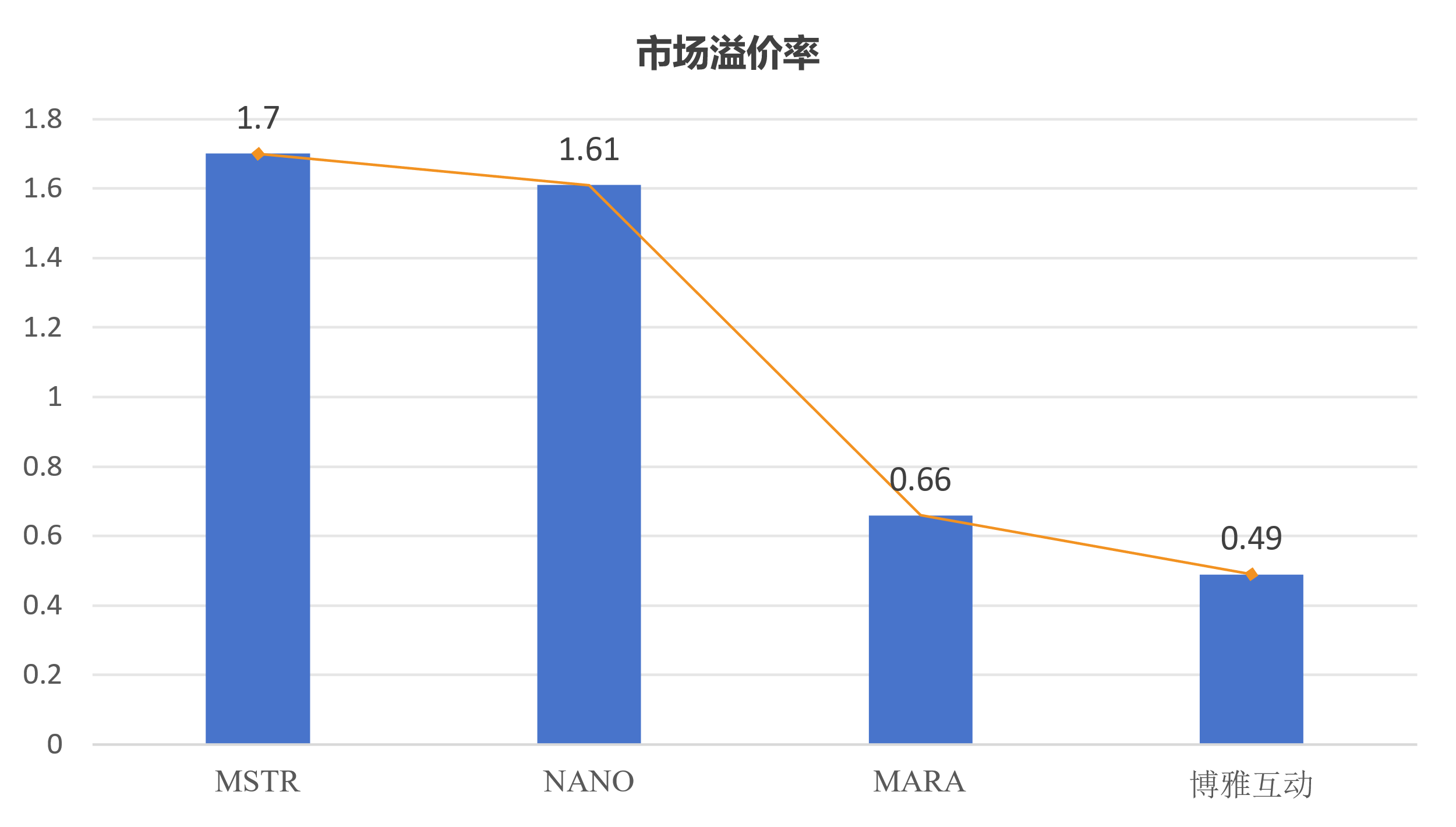 |
| Source: BB Research |
As shown in Table 4, in 2024, MSTR's Bitcoin holdings are 402,100, each Bitcoin is priced at $82,100, its Bitcoin intrinsic value is $33 billion, and its company market value is $89 billion. According to Formula 1, the market premium rate is 1.70;
In 2024, NANO's Bitcoin holdings will be 0.03 million, and the price of each Bitcoin will be $99,700. Its Bitcoin intrinsic value will be $36 million, and its company market value will be $94 million. According to Formula 1, the market premium rate is 1.61;
In 2024, MARA's Bitcoin holdings will be 40,400, and the price of each Bitcoin will be $87,205. Its Bitcoin intrinsic value will be $3.526 billion, and its company market value will be $5.866 billion. According to Formula 1, the market premium rate is 0.66;
In 2024, Boyaa Interactive's bitcoin holdings will be 31,830, with each bitcoin priced at $57,724. The intrinsic value of its bitcoin is $298 million, and its company market value is $444 million. According to Formula 1, the market premium rate is 0.49.
The competition pattern of the coin-holding stock industry is envisioned: the competition between speed and premium rate: the market premium rate of the top MSTR reaches 1.70;
The market premium rate of the new NANO is 1.61.
The median market premium rate is 1.82, which serves as the central valuation of the coin-stock index.
A review of the fluctuations in the companies in the holding industry shows that when the marginal net buying increases, the premium rate can remain high; when the marginal net buying weakens, the premium rate begins to decline; when the marginal net selling occurs, the premium rate will quickly turn negative.
How high the premium rate of cryptocurrency companies represented by MSTR can be maintained depends on: 1) the height and length of the BTC bull market; 2) the sustainability of marginal BTC net purchases; 3) the continuous marketing ability of the company founders
5.3.2 Net Asset Value (NAV) Premium Model
The company's value is estimated based on the net value of the company's Bitcoin assets and the premium multiple given by the market.
Company value = premium multiple * Bitcoin net assets
| Figure 8 Company Value of MSTR, NANO, MARA and Boyaa Interactive |
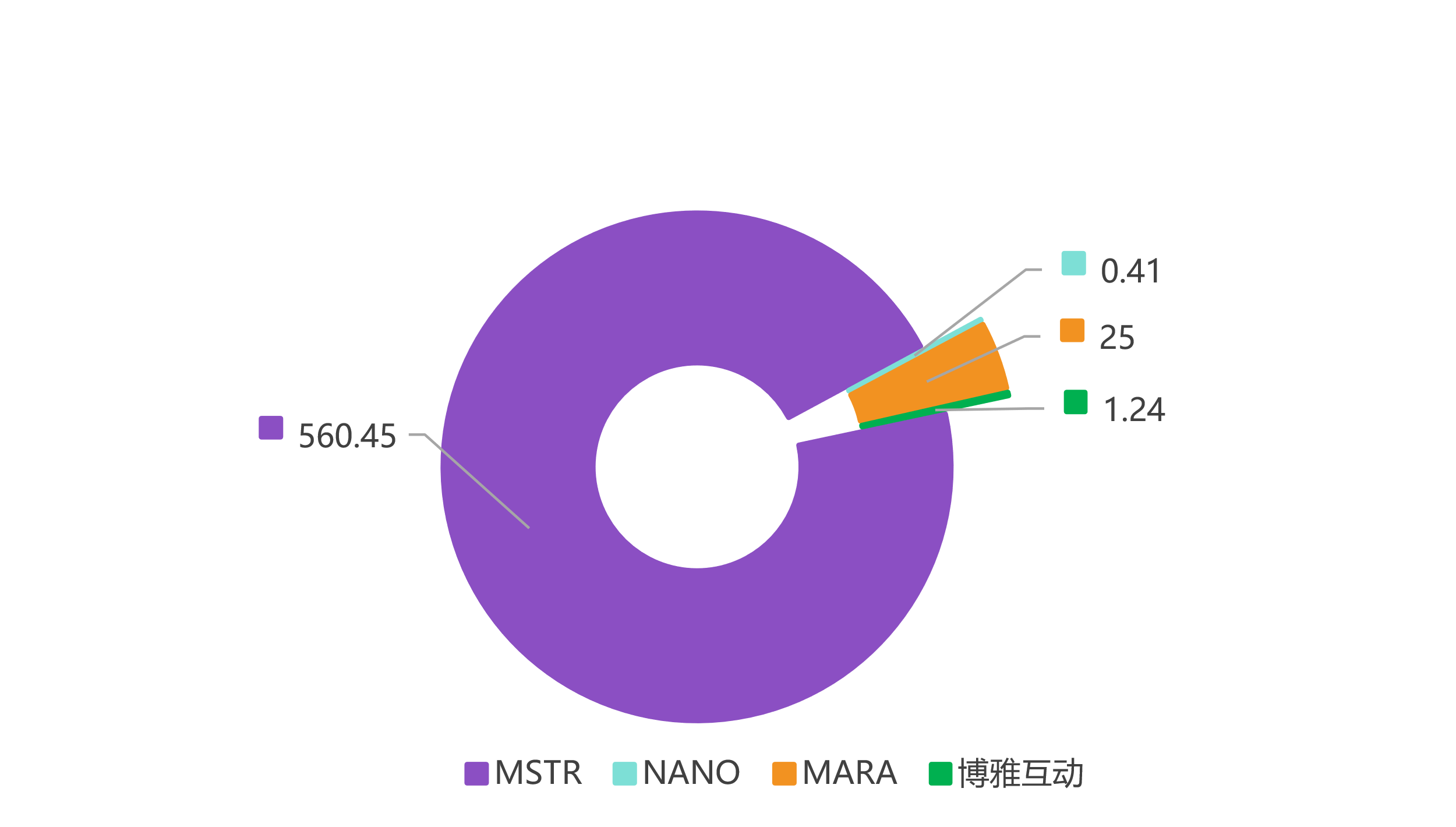 |
| Source: BB Research |
As shown in Table 5, in 2024, MSTR's Bitcoin value is $37,596.35 million, liabilities are $4,570 million, Bitcoin net assets are $33,026 million, premium multiple is 1.70, and company value is 560.45;
In 2024, NANO's Bitcoin value is $33.66 million, liabilities are $8 million, Bitcoin net assets are $26 million, premium multiple is 1.61, and company value is 0.41;
In 2024, MARA's Bitcoin value is $3.7815 billion, liabilities are $13 million, Bitcoin net assets are $3.768 billion, premium multiple is 0.66, and company value is 25.00;
In 2024, Boyaa Interactive's Bitcoin value is US$298 million, its liabilities are US$46 million, its Bitcoin net assets are US$252 million, its premium multiple is 0.49, and its company value is 1.24.
The median company value is 0.27, which serves as the core of industry valuation.
5.3.3 Bitcoin Price Sensitivity Model
Valuation based on the impact of a certain change in Bitcoin price on the company's market value
Market value change = sensitivity coefficient * Bitcoin price
As shown in Table 6, in 2024, MSTR's price sensitivity coefficient is 1.51%. For every 1% increase in Bitcoin price, the company's market value increases by $861 million;
In 2024, NANO's price sensitivity coefficient is 2.96%. For every 1% increase in Bitcoin price, the company's market value will increase by $1 million.
In 2024, MARA's price sensitivity coefficient is -0.53%. For every 1% increase in Bitcoin price, the company's market value decreases by $13 million.
In 2024, Boyaa Interactive's price sensitivity coefficient is 1.04%. For every 1% increase in Bitcoin price, the company's market value will increase by US$10 million.
The median increase in market capitalization is 0.01, which serves as the center of industry valuation.
Buying cryptocurrency stocks is equivalent to obtaining the expected increase in Bitcoin and the performance multiplier of listed companies. First, cryptocurrency stock companies can borrow debt to increase leverage, and second, they can multiply the PE Ratio. During the Bitcoin bull market, MSTR can maintain a leverage of about 2 times.
At present, there is no perpetual motion machine for coin holding companies. After MSTR's BTC holdings reach a certain limit (Grayscale's is 200,000), the premium rate will definitely decline. Reasonable allocation of coin-stock ETFs is more conducive to obtaining long-term stable returns.
Finally, the study found that when the historical MSTR turnover rate exceeded 30%, a stage peak signal appeared.
6 Conclusions and Recommendations
6.1 Research summary
Although the global group of listed companies holding Bitcoin is still in the development stage, it has demonstrated vigorous vitality and huge potential.
From the perspective of development characteristics, the region is concentrated in North America, the industry spans multiple fields such as technology, finance, and mining, and the scale of currency holdings and asset allocation strategies are diversified and differentiated. Some companies embrace it aggressively, while others test the waters cautiously.
In terms of opportunities, Bitcoin brings asset diversification and new tools to hedge against inflation to listed companies, which meets the needs of strategic transformation and is expected to seize the initiative in the wave of emerging technologies. However, the challenges should not be underestimated. The roller coaster-like fluctuations in currency prices, unclear regulatory policies, and limited market acceptance all bring variables to the company's finances, operations, and strategic implementation.
In 2025, the release of the ETF index of coin-holding stocks will be formed, and mainstream institutions will cover coin-holding stock investment. All coin-holding stocks will issue coins, and all coins will issue stocks. The combination of holding listed companies and Bitcoin enhancement strategy will bring disruptive investment opportunities.
Overall, Bitcoin investment has become a key path for listed companies to explore new growth and cope with a complex economic environment, but they need to carefully weigh the pros and cons and manage risks meticulously.
6.2 Investment advice
For aggressive investors with risk appetite, they can pay attention to industry pioneers such as MicroStrategy and industry newcomer Nano, especially when the Bitcoin market adjusts, panic spreads, or the price hits key support levels, they can build positions in batches on dips to share in its high growth potential; at the same time, they can closely track the layout of Bitcoin derivatives of emerging technology and financial companies and ETFs of coin-holding indexes to capture early entry opportunities and realize asset appreciation by taking advantage of industry growth dividends, but they must set strict stop losses to guard against black swan shocks.
Conservative investors should prioritize focusing on the Bitcoin holdings of large, mature listed companies, such as Tesla, and wait until market trends become clear and the policy environment is stable. Then, they can combine technical analysis with fundamental research, and participate moderately with a small proportion of funds when the Bitcoin price falls back to a reasonable valuation range. They should focus on long-term holding, and use the company's professional management and diversified business to buffer currency price fluctuations and achieve steady asset appreciation. At the same time, they can optimize the risk-return ratio of the investment portfolio by combining traditional safe-haven assets such as gold and high-quality bonds.
Conservative investors can participate indirectly by paying attention to Bitcoin-related financial products, such as compliant Bitcoin ETFs (if approved in a certain region), tracking the trends of professional asset management institutions, and making small tentative investments when market sentiment is optimistic, funds continue to flow in, and technical indicators are improving. They can strictly abide by asset allocation discipline, control Bitcoin investment exposure at an extremely low level, and moderately share the industry's growth dividends while ensuring the safety of principal.
6.3 Identification of risk factors
Since its birth, the price of Bitcoin has fluctuated dramatically, which has had a serious impact on listed companies holding Bitcoin. Take MicroStrategy as an example. When the price of Bitcoin fell in 2022, the company's asset impairment losses increased significantly, the net loss in the financial report widened, and the market value and stock price plummeted. The drastic changes in prices have made listed companies full of uncertainty in financial and market value management, and investor confidence has also been affected.
The regulatory attitudes towards Bitcoin vary greatly around the world and are constantly changing. Some states in the United States recognize the legality of Bitcoin, but federal agencies have strict supervision, and it is difficult to obtain approval for Bitcoin ETFs. Listed companies holding Bitcoin face strict compliance reviews and information disclosure requirements. China has banned virtual currency-related businesses since 2017, and domestic companies are restricted from investing in Bitcoin. The European Union is constantly improving the regulatory framework for crypto assets. The direction of regulatory policies affects the legitimacy and operating model of listed companies holding Bitcoin. Once supervision is tightened, the Bitcoin assets of listed companies may depreciate, face selling pressure, and hinder business and strategic layout.
In daily business scenarios, Bitcoin has many problems as a means of payment. Its transaction confirmation time is as long as 10 to 60 minutes, which is difficult to meet the instant transaction needs of retail fast-moving consumer goods. The large price fluctuations also expose merchants to high exchange risks. In terms of cross-border transactions, although Bitcoin can theoretically bypass foreign exchange controls and reduce remittance costs, its actual operation is restricted by the exchange policies and anti-money laundering supervision of various countries. The inflow and outflow of funds are not smooth, the exchange rate conversion is complicated and the liquidity is insufficient. This limits its role in the cross-border business expansion and capital circulation of listed companies, and hinders the popularity of Bitcoin in the market.
6.4 Industry Outlook
Looking ahead, global listed companies holding Bitcoin are expected to continue to expand the boundaries of financial innovation. On the one hand, it will promote the diversification of Bitcoin financial products, from simple holding to complex derivatives such as Bitcoin futures, options, and structured notes, to meet the needs of different risk preferences; on the other hand, it will deepen integration with blockchain, help upgrade Bitcoin's underlying technology, accelerate the implementation of applications such as the Lightning Network, improve transaction efficiency, and expand commercial scenarios. In terms of market leadership, leading companies have become industry standard setters with their accumulated resources, technology, and brands, and guide the improvement of regulatory policies; emerging companies have stimulated the catfish effect with innovative vitality, promoted diversified competition and healthy development of the industry, and jointly promoted Bitcoin from the edge to the mainstream, integrated into the core of the global financial ecosystem, reshaped the asset allocation, payment settlement, and value storage landscape, and injected lasting power into the digital transformation of the economy.
In the future, "all coin stocks will issue coins, and all coins will issue stocks." Coin stocks will form a new industry - the capital market WEB3.0 Carnival, riding the wind and soaring into the sky, with a promising future.
Coin-stock investment rating description
The definition is as follows, based on the increase or decrease in the coin-stock ETF index within 6 months after the reporting date:
1. Buy: Relative to the performance of the coin-stock ETF index +20% or more;
2. Increase holdings: +10% to +20% relative to the performance of the coin-stock ETF index;
3. Neutral: Fluctuates between -10% and +10% relative to the performance of the coin-stock ETF index;
4. Selling: Relative to the performance of the cryptocurrency ETF index, the performance is less than -10%.
Industry investment rating:
The standard is the increase or decrease of the industry index relative to the coin stock index within 6 months after the reporting date, which is defined as follows:
1. Positive: The industry index performs more than +10% relative to the cryptocurrency index;
2. Neutral: The industry index performs at a level of -10% to +10% or more relative to the coin-stock index;
3. Bearish: The industry index performs less than -10% relative to the cryptocurrency stock index.
We would like to remind you that different securities research institutions use different rating terms and rating standards. We use a relative rating system, which indicates the relative weight of investment.
Recommendation: Investors' decisions to buy or sell crypto-stocks depend on their own circumstances, such as their current holdings and other factors to consider. Investors should not rely solely on investment ratings to draw conclusions.











